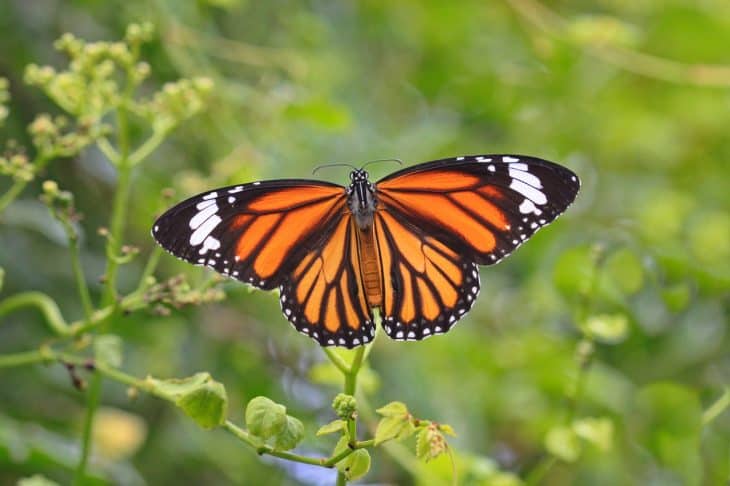
The monarch butterfly is among the most recognized and studied butterflies in the world. Still, people have yet to know more about them than the iconic color of their wings. Get to know these magnificent creatures more with 50 interesting monarch butterfly facts.
- Each year, about 4 generations of monarch butterflies occur.
- A monarch butterfly can migrate up to 3,000 miles away.
- On average, monarch butterflies weigh less than 1 gram.
- A female monarch butterfly can lay as much as 1,000 eggs in her lifetime.
- Monarch butterflies usually live 2-6 weeks long.
- As per the World Wildlife Fund, the monarch butterfly is an endangered species.
- The scientific name of the monarch butterfly is Danaus plexippus.
- The monarch butterfly is a member of the milkweed butterfly group.
- It has a reputation for its large size, common orange and black wings, and long annual migrations.
- On average, a monarch butterfly’s wingspan is 90-100 mm wide or about 4 in.
- Since the 1980s, western monarchs have diminished by over 99%.
- At the same time, eastern monarchs decreased by about 80%.
- Monarch butterflies have no lungs.
- They breathe through tiny vents in the thorax or abdomen called spiracles.
- Their senses of smell and vision aid them in assessing their environment.
- Only eastern monarchs that develop in late summer or early fall make the annual winter migration south.
- The last monarch generation of the year can live as long as 8-9 months.
- Monarch butterflies can smell with their antennae as well.
- Their wings flap slower than other butterflies at only 300-720 times per minute.
- Monarchs symbolize resilience in urban areas while it signals summer in rural areas.
Monarch Butterfly Facts Infographics
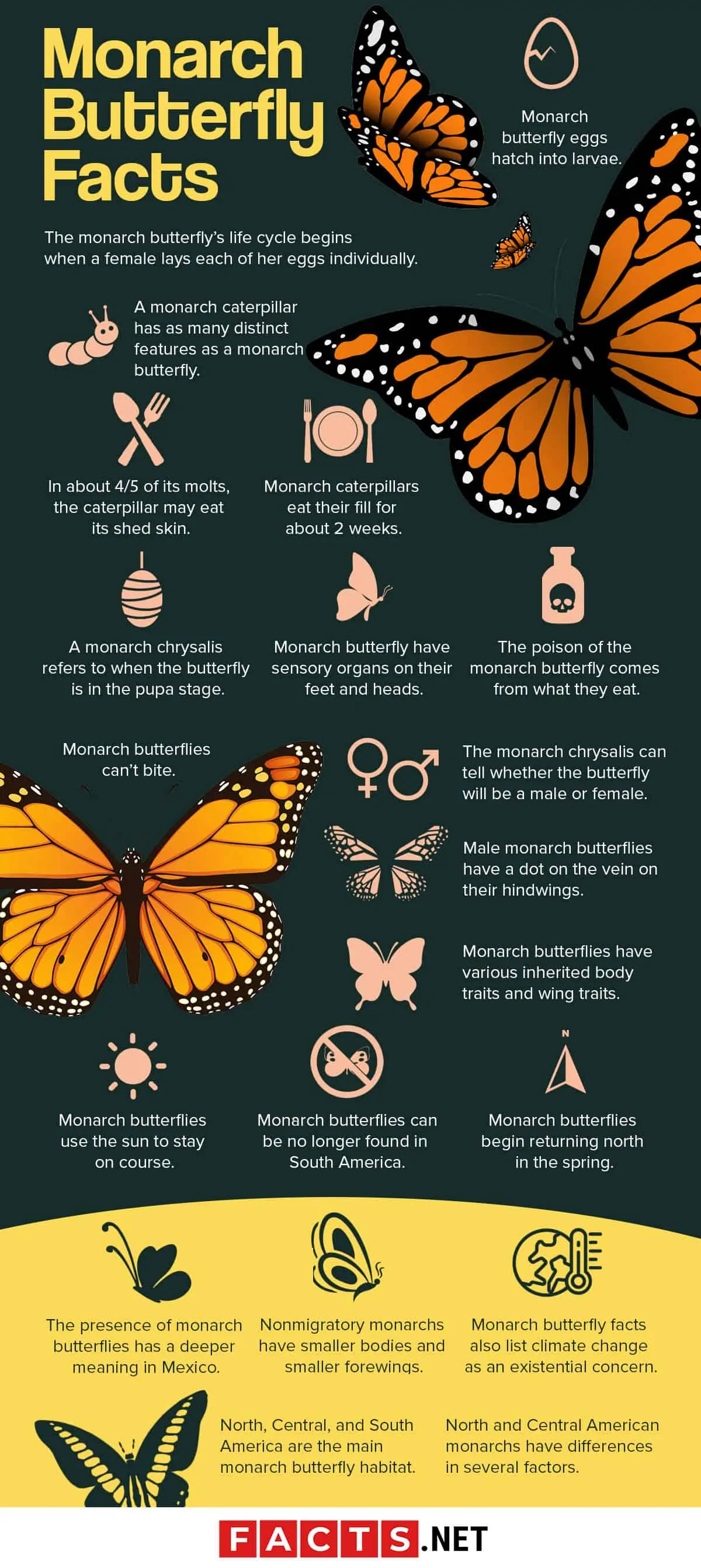
The monarch butterfly’s life cycle begins when a female lays each of her eggs individually.
It occurs on the leaf of a milkweed plant where the female secretes a bit of glue to attach each one. Usually, female monarch butterflies lay 300-500 eggs over a period of 2-5 weeks.
Monarch butterfly eggs hatch into larvae.
In the world of moths and butterflies, it is known as caterpillars. The main job of a caterpillar is to grow, hence, they spend most of their time eating.
A monarch caterpillar has as many distinct features as a monarch butterfly.
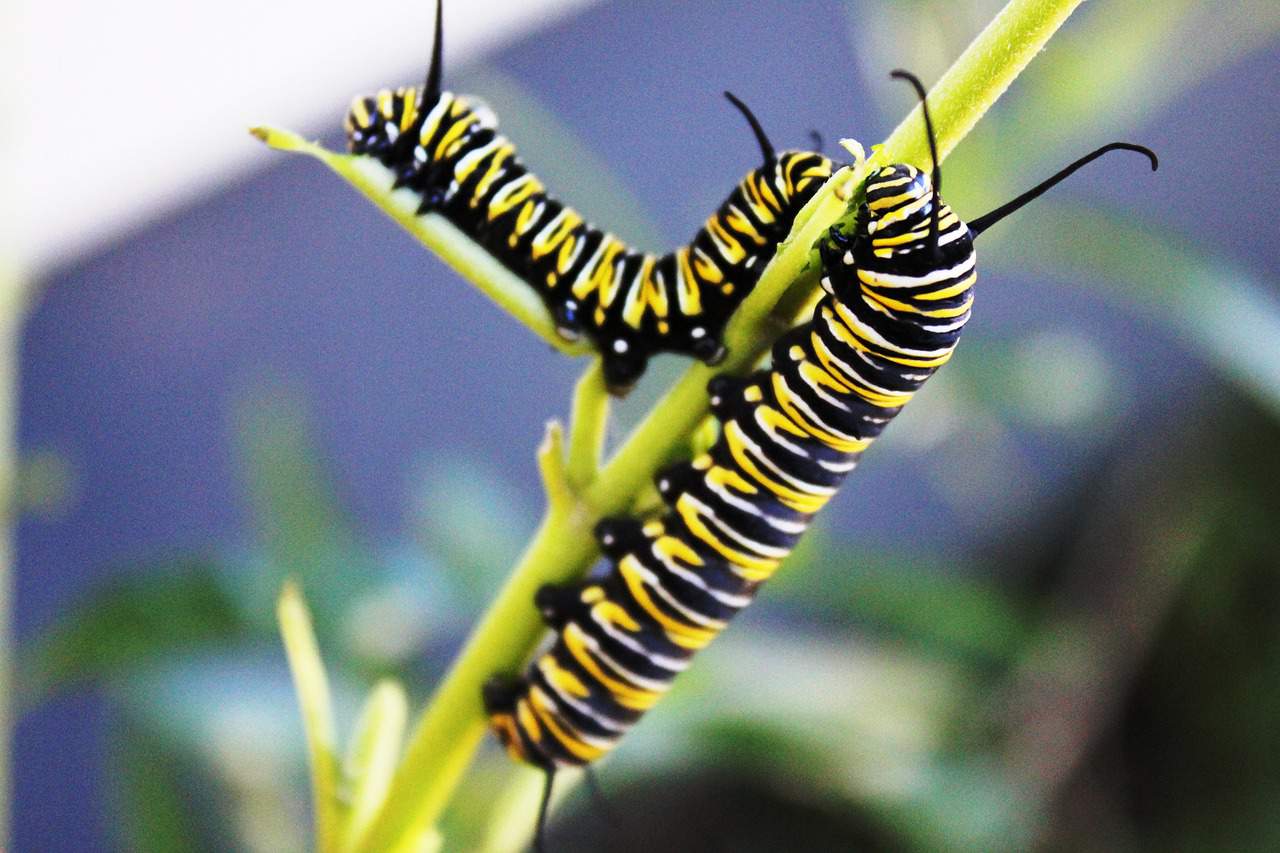
Their vertical stripes of black, white, and yellow-green make them easily recognizable. Several molts after, and they grow up to 45 mm or almost 2 in.
A monarch chrysalis refers to when the butterfly is in the pupa stage.
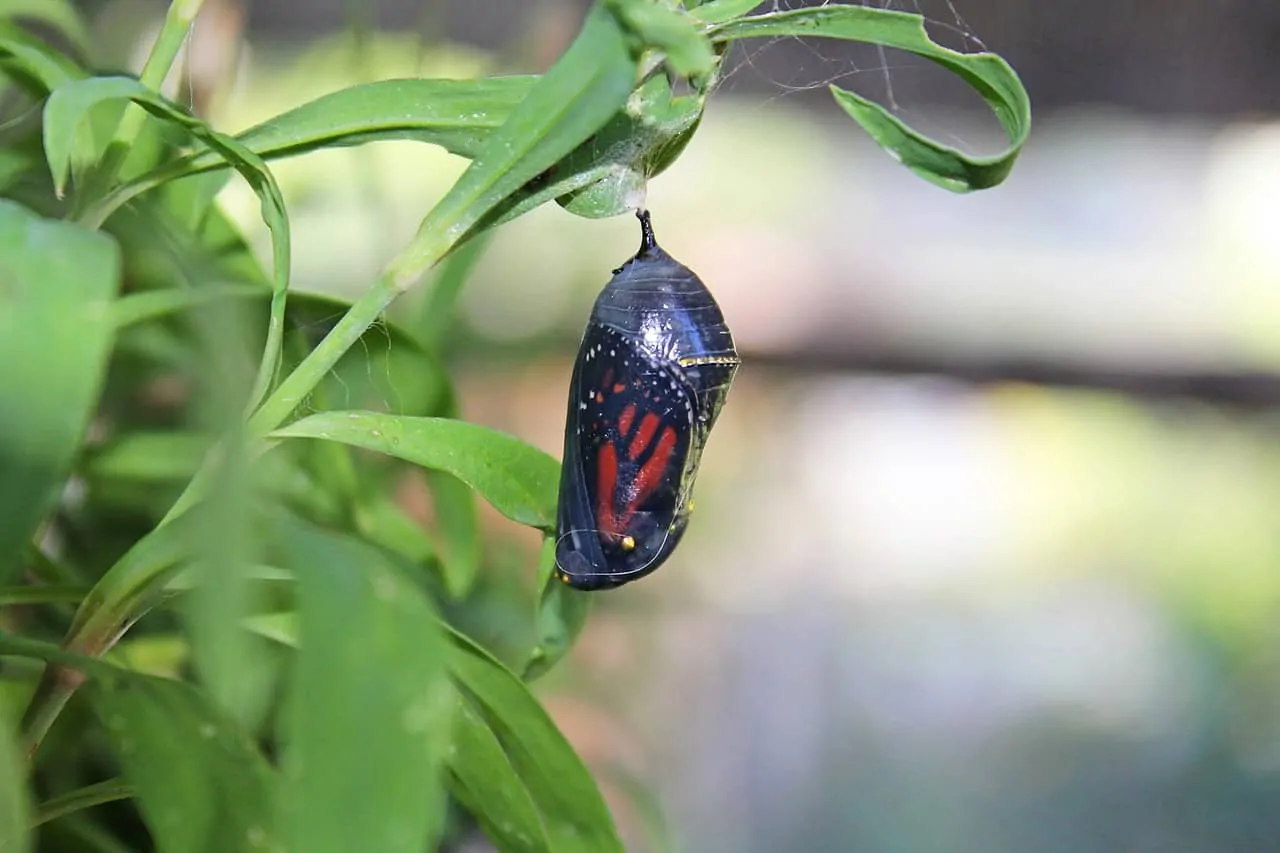
Eventually, the monarch caterpillar leaves its milkweed plant. A part of monarch butterfly facts is how they pupate in a different place as a pale green, golden-spotted chrysalis.
The monarch chrysalis can tell whether the butterfly will be a male or female.
However, it can be a little difficult. The female in monarch chrysalis has a very small line present in one of their abdominal segments. Meanwhile, this indicator is absent in males.
Monarch caterpillars eat their fill for about 2 weeks.
Then, they spin protective cases around themselves in entering the pupa stage. Next in the monarch butterfly life cycle is finishing their metamorphosis and emerging into a fully-formed adult monarch butterfly. It happens about 1-2 weeks after the spinning.
In about ⅘ of its molts, the caterpillar may eat its shed skin.
It happens in stages known as the “instar.” The 5th instar is 10-12 hours before the skin shedding. In this stage, the monarch caterpillar spins silk for it to hang. A few initial wiggling, then the pupa skin hardens into a protective covering.
Monarch butterflies have different actions depending on when they complete their metamorphosis.
Those who emerge in the spring or early summer start reproducing within days. Meanwhile, those who are born in the late summer or fall know that winter is coming. Hence, they spend time heading south for warmer weather.
Male monarch butterflies have a dot on the vein on their hindwings.
This dot is not coloration, but rather is made of specialized scales. Meanwhile, males of related species produce a scent called pheromone, and it attracts females. Moreover, male and female monarch butterflies have differently shaped abdomen. The wing veins of the female also look slightly wider than the males.
Monarch butterfly have sensory organs on their feet and heads.
These tools help them identify different plants. However, it is still uncertain whether they can “taste” things as other animals are able to do.
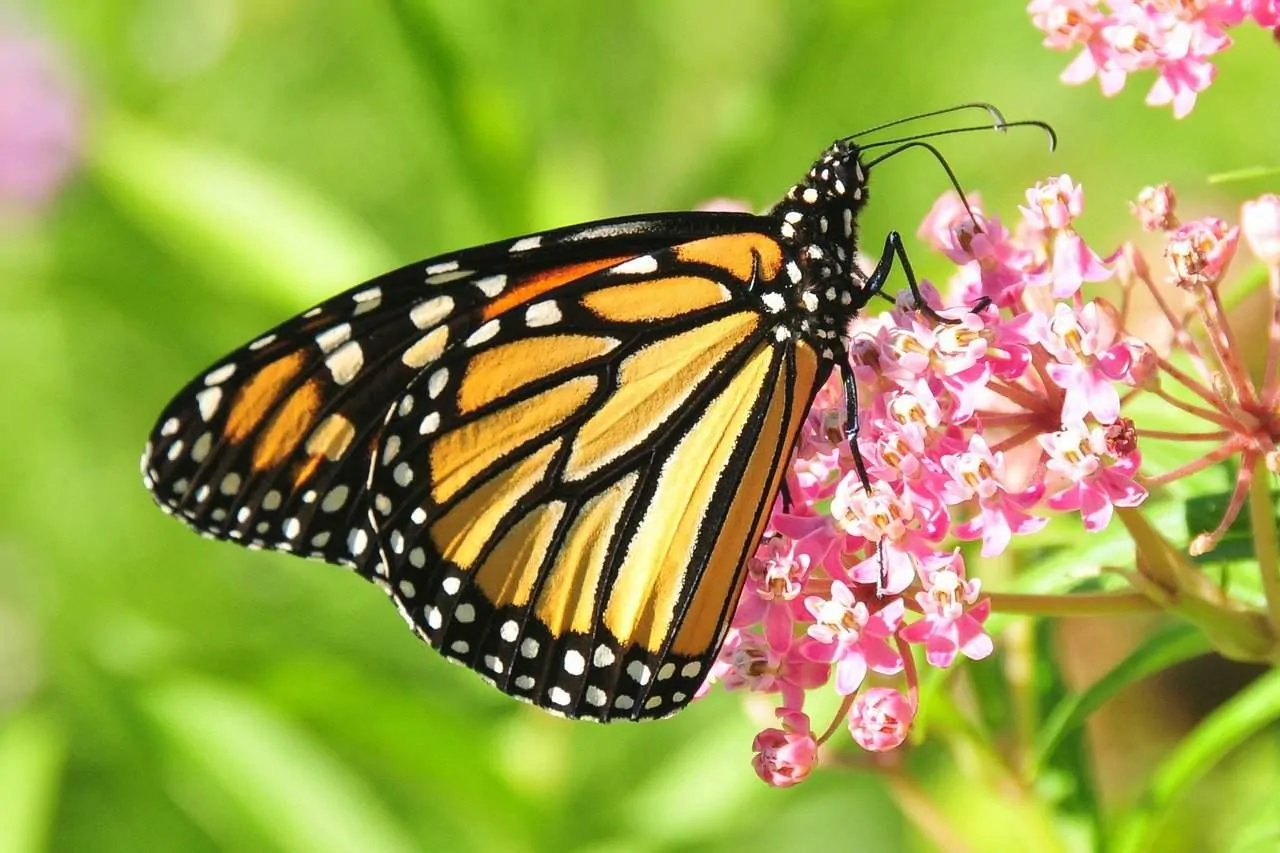
Monarch butterflies can’t bite.
Instead, they have a proboscis, a long tongue that works like an eyedropper. Monarchs use it in drawing up nectar. Also, it is like a retractable garden hose as it coils up under the lower lip when not in use.
Monarch butterflies have various inherited body traits and wing traits.
Hence, it indicates that monarchs have evolved in response to several factors. Among them are migratory influences, breeding behavior, and genetic drift.
Monarch butterfly facts also list climate change as an existential concern.
For one, these creatures are sensitive to temperature and weather changes. It means that climate change might affect biological processes like reproduction and migration. Moreover, extreme weather events affect their survival directly.
Monarch butterfly symbolism indicates a time for personal change and internal change.
It emphasizes changes of perspective as well as how people perceive their place in the world and their contentment within it. Moreover, the monarch butterfly introduces concepts of reincarnation.
The presence of monarch butterflies has a deeper meaning in Mexico.
Millions of this creature return to Mexico each year on November 1 and 2. On this day, Mexicans observe el Dia de Los Muertos or the Day of the Dead. Hence, tradition regards the monarch as the returning spirits of loved ones who have died.
North, Central, and South America are the main monarch butterfly habitat.
They can also be found in Hawaii and countries like Australia and India. While monarchs are native to North and South America, they have eventually spread to other warm places where milkweed grows.
Monarch butterflies can be no longer found in South America.
Meanwhile, monarch butterflies have two main groups in North America. One is the western monarchs that breed west of the Rocky Mountains and overwinter in southern California. The other is the eastern monarchs which breed in the Great Plains and Canada and overwinter in Central Mexico.
North and Central American monarchs have differences in several factors.
It includes variations in wing and body morphology as well as migration and breeding behavior. For instance, monarchs found in eastern North America undertake long-distance migrations and possess larger bodies and angular forewings.
Nonmigratory monarchs have smaller bodies and smaller forewings.
They are found in southern Costa Rica, Florida, Hawaii, and Puerto Rico. Meanwhile, monarchs dwelling in western North America have small bodies yet large wings. This adaptation might have associations with a reliance on gliding flight.
Monarch butterflies begin returning north in the spring.
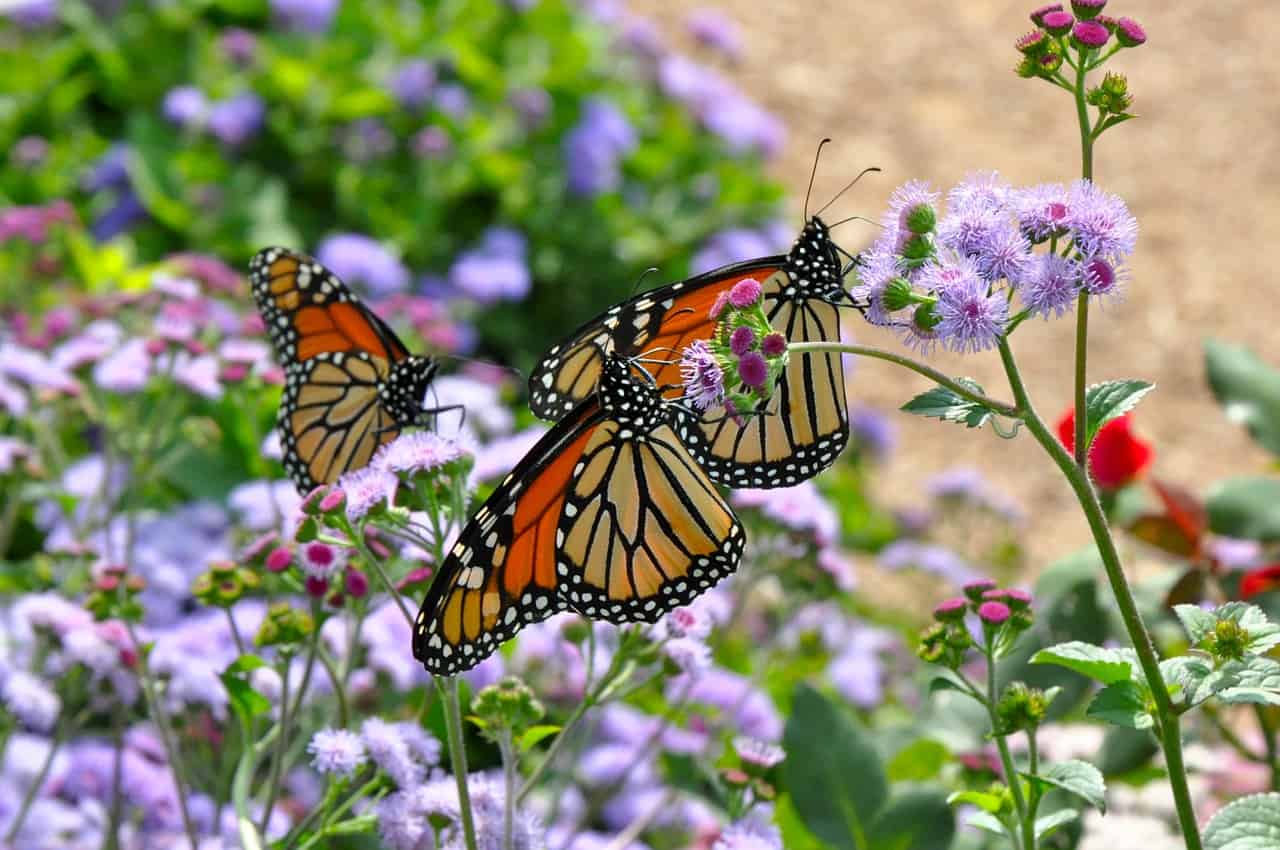
Along the way of monarch butterfly migrations, they feed on nectar. Then, another cycle begins in the laying of eggs only on milkweed plants. A new generation then hatches, matures, and proceeds with the northward trip.
Monarch butterflies use the sun to stay on course.
Aside from that, they also have a magnetic compass that helps them navigate especially on cloudy days. They have special genes as well for highly efficient muscles that give them an advantage for long-distance flight.
The poison of the monarch butterfly comes from what they eat.
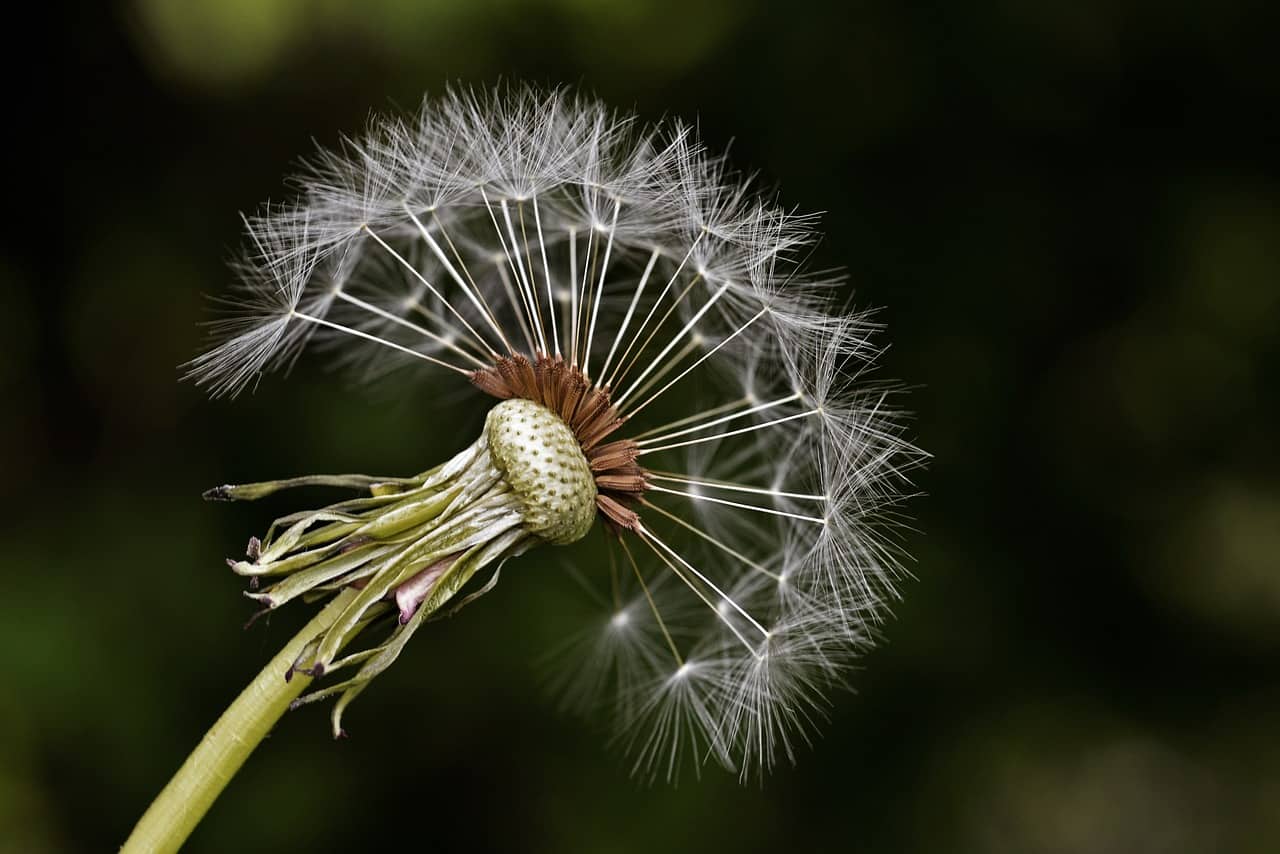
While milkweed is a toxic plant, the magnificent monarchs have already evolved to tolerate it. These creatures even use it to their advantage by storing toxins in their bodies, making themselves poisonous to predators like birds.
Monarch butterfly's wings color is a warning for predators of their bad taste.
Their most common color is the orange wings marked by black veins and black borders with two rows of spots. With this, monarchs have similar coloration to that of the viceroy butterfly. As their colorful pattern makes them easy to identify, predators instantly know that they are foul-tasting and poisonous.
The monarch butterfly shares a “Müllerian mimicry” relationship with the viceroy.
That they resemble one another emanates a form of defense against predators. With their similar colors, they also have the same unpalatable appeal to predators.
There have been several recognized subspecies of monarch butterflies.
For one, the D. plexippus plexippus is a migratory kind that primarily resides in North America and occasionally on islands in the Caribbean region. Meanwhile, the D. plexippus megalippe is a nonmigratory species dwelling on the Cayman Islands in the Caribbean.
The last monarch butterfly generation of the year becomes sexually mature only after becoming adults.
This condition is in contrast with the summer generations. Determinants are the decline of nectar plants and environmental factors. Moreover, the late summer butterflies go into a “reproductive diapause,” meaning they can’t reproduce.
Come spring, monarchs become mature and reproduce the new first generation that is northbound.
There are two reasons why this generation lives much longer. One, they are not using energy to reproduce. The other is that they are in a very cool location; slowing their metabolism and allowing them to live longer.
The Monarch Butterfly Biosphere Reserve protects the overwintering forests of the monarchs.
What makes it more interesting is that it is a UNESCO World Heritage site. Logging is banned in the place. However, illegal logging and degradation of the forest have become threats in the survival of monarch populations.
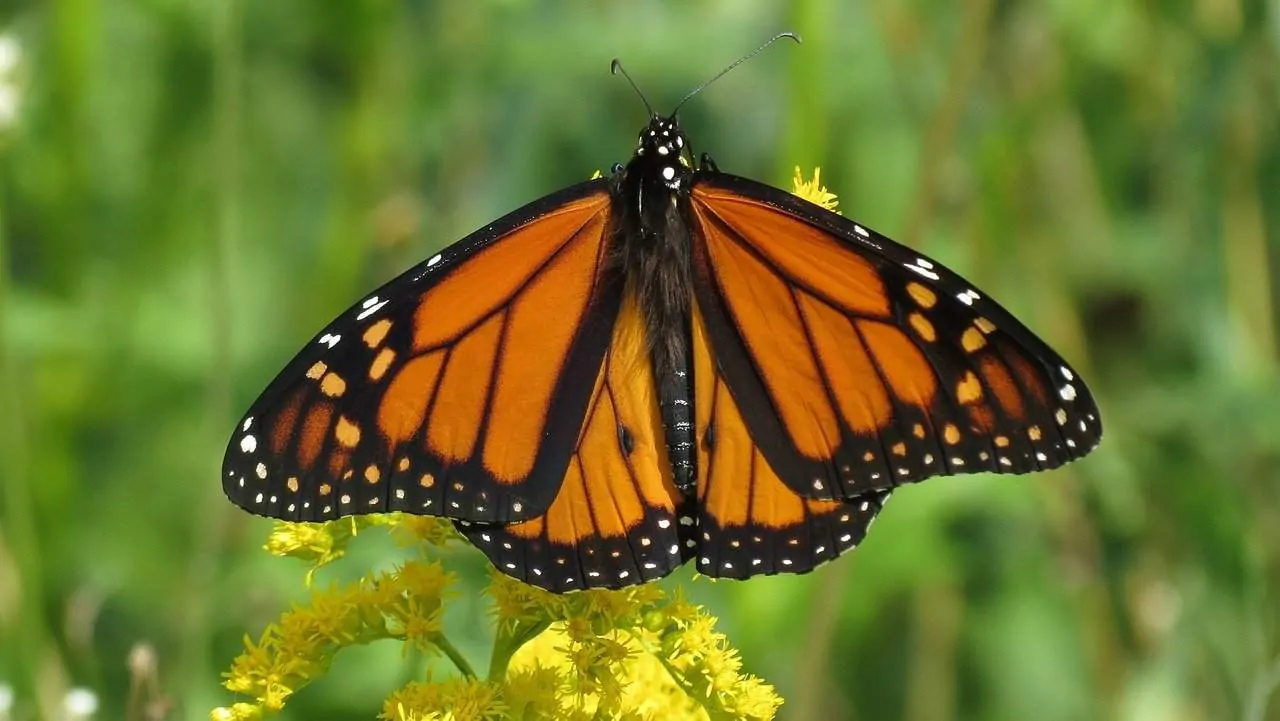
The loss of milkweed plants is another factor in the endangerment of the monarch butterfly.
Most probable, the cause is the expansion of genetically modified herbicide-resistant crops in the U.S. in the early 21st century.
Evidence of the decline in monarch populations is sparse in relation to several threats to their existence.
Challenges hinder the ability of scientists to accurately monitoring and determining the population status of the monarchs. Aside from that, they also have limited knowledge of naturally occurring annual and geographical population fluctuations.
Was this page helpful?
Our commitment to delivering trustworthy and engaging content is at the heart of what we do. Each fact on our site is contributed by real users like you, bringing a wealth of diverse insights and information. To ensure the highest standards of accuracy and reliability, our dedicated editors meticulously review each submission. This process guarantees that the facts we share are not only fascinating but also credible. Trust in our commitment to quality and authenticity as you explore and learn with us.
